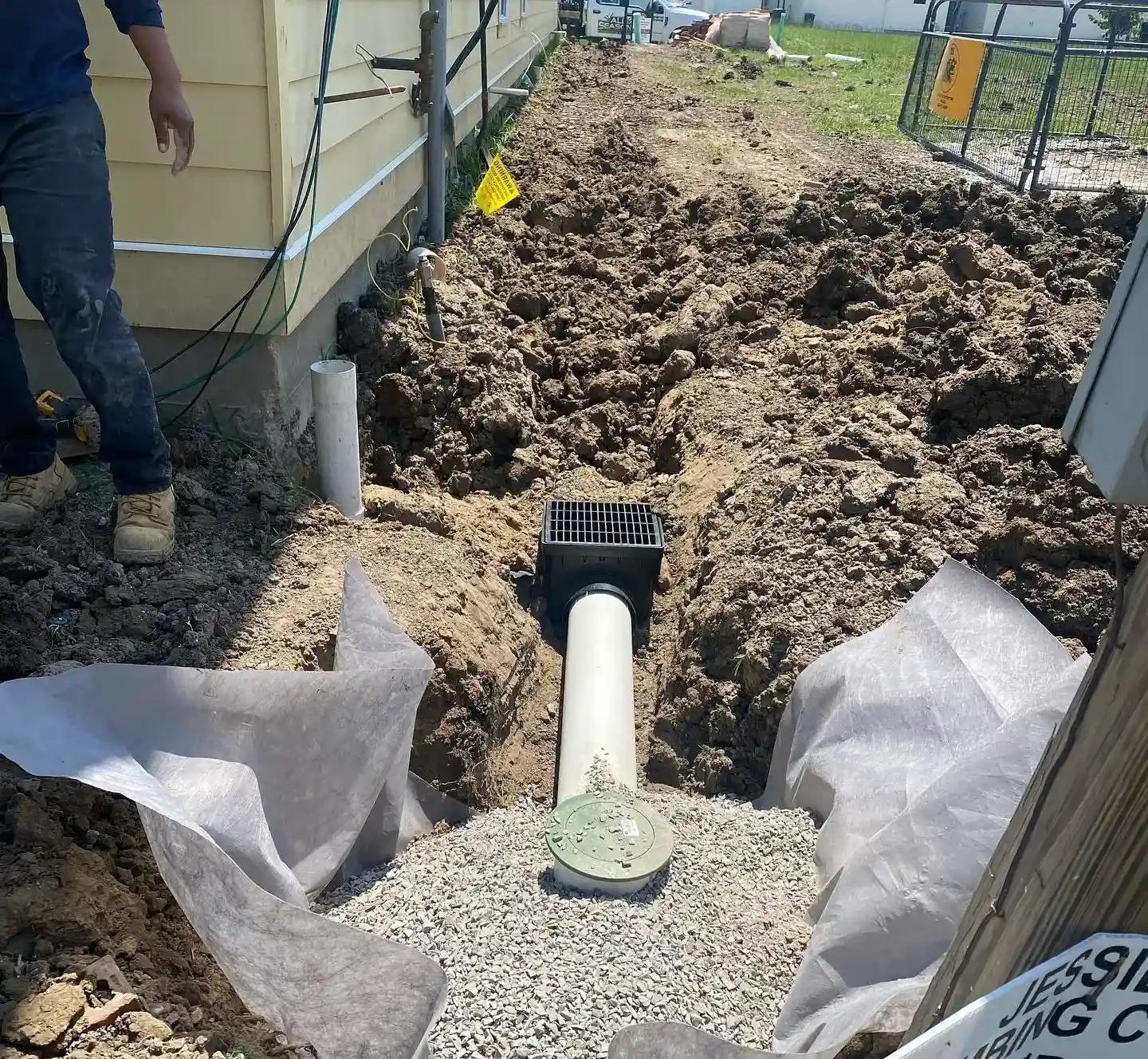After heavy storms, a professional drainage assessment identifies hidden water flow issues, structural saturation, and subsurface erosion before they escalate. Quick detection helps prevent foundation damage, mold growth, and lawn deterioration. Without assessment, recurring surface runoff or subsurface pressure may cause permanent property damage.
All Seasons Landscaping & Lawn Care applies practical field experience to determine flood risks, evaluate existing drainage infrastructure, and provide actionable plans tailored to local soil conditions and water patterns. This article explains the value of post-storm drainage assessment with technical data, comparisons, and expert insight.
Key Reasons to Assess Drainage After Storm Events
Prevent Property Damage
Standing water around foundations, patios, or turf causes soil instability, rot, and hydrostatic pressure. Professional assessments detect these early.
Identify Subsurface Flow Disruptions
Stormwater often shifts underground routes. A surface inspection rarely reveals lateral movement through dense clay or sandy loam layers without professional tools.
Verify System Performance
Gutters, French drains, and sump pumps can clog or misdirect water. Performance tests during assessments confirm if these systems still function as designed.
Avoid Repeated Landscape Loss
Water pooling around trees, beds, or grass degrades soil quality, kills root systems, and increases erosion. Detecting drainage faults helps protect previous landscaping investments.
Comparison of DIY vs Professional Drainage Assessment
| Factor | DIY Assessment | Professional Assessment |
|---|---|---|
| Tools Used | Visual checks, basic slope guesswork | Soil probes, moisture meters, trench inspections |
| Accuracy | Low | High |
| Subsurface Analysis | Not possible | Included |
| Cost | Minimal upfront | Higher upfront, lower long-term damage costs |
| Time to Complete | Few hours | 1-2 days (comprehensive assessment) |
| Long-Term Effectiveness | Low | High |
Regional and Soil-Specific Factors in Louisiana
Soil in southern Louisiana holds water longer due to high clay content and low permeability. This increases surface pooling and underground seepage. Seasonal rainfall combined with flat terrain demands reliable drainage. Post-storm assessments often reveal overlooked runoff paths and slow-draining zones in Baton Rouge-area properties.
Bonus Tip
Compact clay soils resist quick percolation. Aeration and regrading are often more effective than surface drainage alone.
Technical Data: Common Drainage System Specs
| Component | Function | Standard Capacity | Failure Indicators |
|---|---|---|---|
| French Drain | Collects lateral water flow | 3-4 inch pipe; gravel trench | Overflow, soft ground, water surfacing |
| Catch Basin | Captures water at low points | 9×9 or 12×12 inch inlet, 4″ outlet | Standing water, leaf blockage |
| Downspout Extension | Redirects roof runoff | Minimum 4 ft from foundation | Pooling near walls |
| Sump Pump | Moves water from low area | 1/3 to 1/2 HP, 2,000+ GPH output | Frequent cycling, no discharge |
Verified Market Statistics and Source References
- The U.S. EPA estimates that improper drainage contributes to 80% of urban property water damage incidents. (Source: U.S. Environmental Protection Agency, 2024)
- FEMA reports over 60% of flood insurance claims stem from insufficient or failed drainage—not major river flooding. (Source: FEMA National Flood Insurance Program, 2023)
- Local case study in East Baton Rouge showed homes with post-storm assessments had 65% fewer landscaping losses over five years. (Source: LSU AgCenter, Regional Study 2023)
Things to Consider Before Making a Decision
- Soil Type: Clay-based or loamy soils behave differently post-storm. Knowing the type influences the drainage approach.
- Storm Intensity History: Frequency and intensity of storms in the area increase wear on drainage systems.
- Existing Drainage Features: Outdated or DIY-installed systems may worsen the issue over time.
- Grading and Slope: Minor grade errors can cause major runoff issues in low-lying sections.
- Foundation Proximity: Water around slab or pier-and-beam structures increases risk of structural movement.
Bonus Tip
In flood-prone neighborhoods, elevate assessment urgency to within 48 hours post-storm to catch soft soil indicators before they compact.
Services from All Seasons Landscaping & Lawn Care That Support Storm Drainage Needs
- Drainage Services: Identify and resolve water accumulation with custom trenching, grading, and subsurface piping.
- Excavation Services: Reshape or modify ground slope to direct stormwater away from structures.
- Lawn Care Services: Address runoff-related lawn damage through turf renovation and soil correction.
- Irrigation System: Ensure no cross-contamination between stormwater and existing irrigation during repairs.
Common Questions About Drainage Assessments
How soon after a storm should an assessment be scheduled?
Within 24–72 hours is ideal, while signs of pooling, erosion, or saturation are still visible.
Is one assessment enough, or should they be repeated?
Repeat after major weather events or visible changes to landscape or performance of existing drainage.
Do all yards need drainage work after storms?
Not always. Well-graded, properly irrigated yards may drain naturally. Assessments confirm whether issues exist
Can poor drainage affect plant health?
Yes. Waterlogged roots die off, and anaerobic soil conditions inhibit nutrient uptake.
Get Expert Drainage Guidance
For accurate post-storm water assessments, technical insight, and region-specific solutions, contact:
All Seasons Landscaping & Lawn Care
Email: [email protected]
Phone: 225-276-8658
Early diagnosis prevents future damage and saves repair costs over time. Act based on facts, not guesswork.
FAQs
What are signs that my drainage system failed during a storm?
Signs include water pooling for more than 24 hours, soil slumping, erosion channels, and basement seepage.
Can I just install a French drain without a professional assessment?
Without site-specific analysis, placement or depth errors could cause backflow or miss the actual water path.
How long does a professional drainage assessment take?
Typical assessments range from a few hours to a full day depending on the size and complexity of the property.
Is stormwater assessment only needed after floods?
No. Even moderate storms can expose weaknesses in underground systems or reveal issues caused by soil compaction.
How much does a typical residential drainage assessment cost?
Cost varies by lot size and scope but generally ranges from $200–$600 for residential properties in Baton Rouge.

